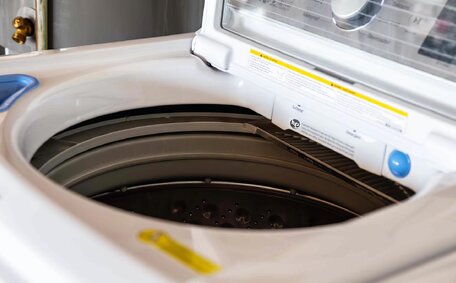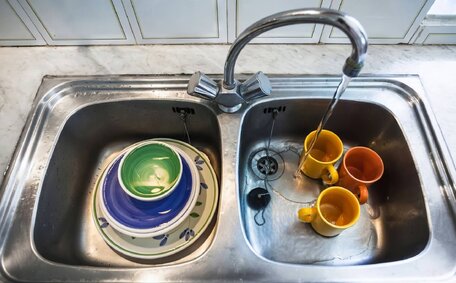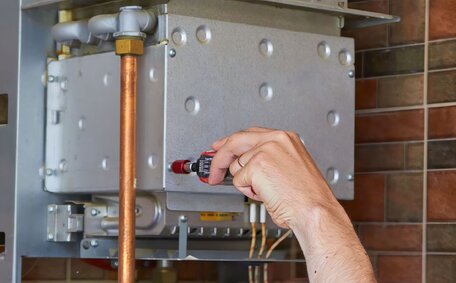What is a Hot Water System Drain Valve and What Does it Do?
A drain valve is a crucial component located at the bottom of most residential water heaters, essential for effective hot water system operation. It enables the removal of accumulated sediment inside the tank, maintaining system efficiency.
As water is heated, minerals and other debris settle and harden inside the tank. Unchecked sediment can cause scale to form, impairing heating efficiency, triggering circuit breakers, and reducing the system’s lifespan. The drain valve offers a simple way to periodically flush the tank clean.
For maintenance flushing using the drain valve, first, disconnect the power supply to the system and connect a garden hose to the valve outlet. Open the valve to drain the tank, then close it and refill the system to complete maintenance.
The drain valve also serves a safety function. If water pressure inside the tank climbs to dangerous levels, the valve provides pressure relief by allowing overheated water to discharge. Without this outlet, the tank itself could rupture from excess internal pressure.
In essence, the drain valve ensures system efficiency through routine flushing and acts as an emergency safety feature.
Common Drain Valve Issues to Watch out For
Hot water heater drain valves can develop a few common issues over time that hamper their performance and require attention. Be vigilant for common issues such as:
- Leaks - If there’s no tight seal on the valve, water will drip from the outlet, wasting hot water and energy. Leaks often stem from mineral deposits preventing full valve closure, causing leaking hot water, or age deterioration of washers and seals.
- Blockages - Sediment accumulation inside the tank can clog the valve outlet or prevent the valve from fully opening. A clogged valve can obstruct tank drainage, complicating maintenance.
- Failure to Open - Mineral scale, corrosion and sediment can prevent the valve from operating when needed for blowing down the tank. Forceful handling can also damage the operating mechanism.
- Failure to Close - Similarly, internal obstructions combined with worn washers and seals may prevent the valve from closing fully once opened for maintenance purposes. This causes continual water leakage.
It is important to periodically inspect the drain valve for these issues and perform maintenance as needed. Malfunctioning drain valves lead to substandard system performance, higher energy bills, potential water damage, and increased risk of dangerous pressure buildups.
Leakage from the Drain Valve
One of the most obvious and disruptive drain valve issues is leakage from the outlet. Address all leaks promptly to avoid significant water wastage, as even minor dripping can be cumulative.
Begin troubleshooting a leaky drain valve by visually inspecting it and its fittings under a pressurised system. Check for water beads or droplets forming on the valve body and floor drain outlet pipe. Also check the surrounding area for water pooling on the floor or running down the side of the heater.
If leaks are external to the valve mechanism, try tightening any pipe fittings first. However, leaks typically indicate that internal seals and components have deteriorated and no longer seal effectively.
To fix internal valve leaks, usually, you must shut off the water and replace the valve completely. Ensure both water and gas supplies are shut off before attempting any replacement. If you are unfamiliar or uncomfortable with replacement yourself, contact a licenced plumber to avoid safety or operational issues.
Unaddressed leaks lead to substantial water wastage, a critical concern given Australia’s significant water use. Studies estimate hot water heating accounts for up to 25% of household energy expenditure. Persistent small leaks easily waste hundreds of litres annually.
Corrosion and Rust Buildup
Corrosion and rust accumulation are common issues that can impair drain valve operation or lead to leaks. The hot, humid environment inside hot water systems promotes corrosion, especially of metallic components.
Inspect the drain valve regularly for any signs of rust, discolouration, or wear. Also inspect attached pipes and fittings. Rust scales that break free internally can block the valve from opening.
To remove light surface corrosion on accessible external areas, use a wire brush followed by application of enamel paint. For severe rust or pitting, replacing the entire valve is necessary. The same applies if corrosion has caused fittings to leak.
Left unchecked, corrosion eventually causes leaks even through stainless steel tanks. Replacement of deteriorated anode rods helps extend tank lifespan.Rod depletion combined with mineral buildup leads to corroded areas that fail.
A well-maintained electric gas water heater typically lasts 8-12 years, but corrosion and scale can significantly reduce this lifespan. Performing anode and heating element checks helps optimise efficiency and usage before failure occurs.
Identifying If You Have a Faulty or Failing Drain Valve
There are a few key ways to identify if your hot water system’s drain valve is faulty or failing:
- Visible corrosion, rust flakes or staining on the valve and outlet pipe
- Water leakage from the valve or fittings when the system is pressurised
- Inability to open the valve to release water for blowing down the tank
- Valve failing to fully close after performing maintenance flushing
- Reduced pressure or availability, possibly indicating no hot water due to internal blockages
- Increased energy consumption from water wastage if leaking persistently
Incorporate checking for these warning signs into your routine maintenance for the drain valve and its associated components. Catching problems early allows easier repairs before lack of drainage or serious leaks causes water damage or other major system issues.
Should you encounter valve issues outside your skillset, promptly call a professional plumber for help. Drain valve failures can lead to hazardous pressure buildups or costly water wastage.
When Should a Drain Valve Be Replaced?
Ideally, drain valves should be replaced every 5-7 years as part of routine hot water system maintenance. Their internal components and seals degrade over time, even without heavy usage. By 5-7 years, the likelihood of leaks or failure to open/close increases considerably.
Pre-emptively replace old valves to prevent water and energy losses. Slow leaks easily waste hundreds of dollars in water and energy annually. Plus a stuck closed valve prevents blowing down sediment, reducing system efficiency.
Consider proactive valve replacement when doing major water heater service like element or anode rod checks. Review valves on older systems yearly for corrosion or dripping. Catching minor leaks early prevents extensive damage if a severe leak erupts suddenly.
A malfunctioning drain valve also heightens the risk of not having your hot water working properly if temperature/pressure relief is needed. Stay vigilant and replace outdated valves, ensuring the pilot light stays lit without interruption. At around $15-30, it’s inexpensive preventative maintenance ensuring continued safe, efficient hot water delivery.
Step-by-Step Guide to Replacing a Faulty Drain Valve
Replacing a faulty or leaking drain valve is a straightforward process that can prevent extensive water damage and wasted energy.
Follow these key steps:
- Shut off power and gas/water supply lines to gas water heaters.
- Attach a garden hose to the drain outlet and open the valve water to empty the tank fully.
- Unscrew the faulty valve clockwise using adjustable pliers or a valve key tool.
- Confirm that the new valve’s thread type and size are identical to the old one to avoid the need for adapters.
- Apply thread tape to the valve threads and screw into place until hand tight.
- Refill the tank with cold water by turning water supply back on and check for leaks during pressurisation.
- Restore power/gas once tank is full to resume normal operation.
- Ensure smooth water flowing by draining and refilling the tank once more after a few hours to flush sediment.
Always follow manufacturers guidelines and Australian Standards when maintaining or servicing your water heater. Replacement is straightforward but improper installation can cause dangerous leaks or pressure issues.
Maintaining Your Drain Valve for Optimal Performance
Establish a routine maintenance plan to maintain the optimal function of your hot water system’s drain valve over the years. This not only extends the valve’s lifespan, but optimises overall system efficiency.
Schedule time yearly to inspect the heater drain valve and associated piping for leaks, corrosion and sediment buildup. Catching minor issues early prevents big problems down the road. Check that the valve fully opens and closes during tests to confirm its functionality.
Quarterly, flush your water heater by connecting a garden hose to the drain outlet and fully opening the valve. This blows down mineral deposits and debris, keeping the tank clean. Finish by closing the valve, refilling the system and restoring power.
Replace the valve proactively every 5-7 years as part of your larger maintenance routine. Over time, internal seals and components wear out, increasing the chance of leaks or failure to operate. Replacement valves are inexpensive and easy to install yourself.
Conduct diligent inspections of the anode rod to reduce the chance of internal corrosion. Consider using water softening or scale inhibitors if you live in a hard water area. Keeping pH and mineral levels optimal makes drain valves last longer.
When to Call a Professional Plumber
Typically, drain valve issues are manageable with routine maintenance and the provided troubleshooting tips. But certain scenarios warrant contacting a licenced plumbing professional for assistance:
- If you lack the technical skill or physical capability to complete steps like draining the tank or replacing components
- For extensive valve or piping leaks that continue after tightening fittings
- When the valve shows heavy corrosion, rust or mineral buildup needing specialised cleaning tools
- If the valve fails to open fully or close completely after attempted repairs
- Where other complex repairs are simultaneously needed, like replacing relief valves or anode rods
- If interior inspections show substantial sediment requiring professional flushing equipment
Our licenced and insured plumbers are skilled at servicing all major brands of hot water systems. We are happy to inspect your drain valve or perform necessary repairs.
Contact our skilled local plumbers for competitive rates and swift service by email or phone today.






